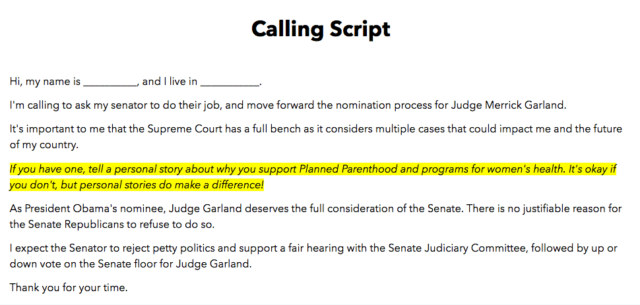Former Congressional Staffer Tells Everyone How to Call Congress so They’ll Actually Listen
(Via tupungato/iStockPhoto)
In the wake of the election of Donald Trump as future president of the United States, a lot of people are reeling, but also feeling like a fire has been lit under their ass and they need to do something productive as soon as possible. Safety pins as a show of solidarity and resistance are nice, but after putting one on, there’s a lot more a person–even a normal person with no high-powered connections or piles of money–can do to help. One way to make your voice heard is by contacting your local representatives, even if they’re not the representatives one voted for, and letting them know how you feel about certain issues and how you want them to act.
Knowing how to call Congress is a bit intimidating and confusing, though. The telephone has gotten intimidating for a lot of people. Hell, I don’t even want to order food delivery if I can’t do it online anymore.
Luckily, writer and editor Emily Ellsworth has done the world a huge public service and laid out exactly how to call Congress so that they will be most likely to listen to us.
Ellsworth was a congressional staffer for six years. She’s a registered Republican who previously worked in the offices of Republican representatives from Utah, but this year she campaigned for Hillary Clinton. She took to Twitter yesterday to give everyone some clear instructions on how best to make their voices heard to their senators and congresspeople.
The key things to take away are that phone calls are the most effective, followed by letters. (Ellsworth says Tweets don’t make much of a difference. Congress is not exactly tech-savvy.) If you have friends or relatives who are also not very tech-savvy, here’s a clear and easy to read printable page with all Ellsworth’s instructions on it.
Ellsworth also says it’s not useful to call a representative out of your state or district, so it’s best to focus on the ones you’re under. Americans have one congressperson and two senators representing them, and those people can be found by looking up your zipcode at WhoIsMyRepresentative.com.
Even though tempers are running extremely high, it’s important to make a plan of what you want to say before you call. If you’re having trouble thinking of what to say or ask for, it’s worth it to contact local advocacy groups for the issues you believe in most strongly and to ask them for advice about what to say. They’ll know what they want constituents to tell their legislators.
As Planned Parenthood writes on its website: “When Congress gets tens of thousands of letters, they pay attention. But when they get even just a few hundred phone calls, they panic.”
Planned Parenthood has helped out with a calling script for people to call their senators and tell them to move forward the nomination process for Judge Merrick Garland:
(Via Planned Parenthood)
Congress can’t actually do anything to stop the appointment of white nationalist Steve Bannon, but people have been calling and asking their senators to publicly denounce him as chief advisor. They can’t block his appointment, but at least this sends a message that we see what’s happening and we don’t accept it. Senate *can* do something about cabinet appointees, though, so keep these numbers handy.
Make a call or send a letter, but don’t lose that contact info. This is not a sprint, it’s a marathon. Ellsworth did a huge public service by giving everyone the tools to contact their representatives, and now that we’ve got her advice, we should keep using it and call often. Go to town meetings. Give money, even symbolic amounts, to advocacy groups in our states or in others. Volunteer on campaigns for politicians we want to see elected.
If a representative does something you do like, that’s worth a call too. Thank and support them when they do the right thing, and they’ll know there’s support for what they’re doing.







